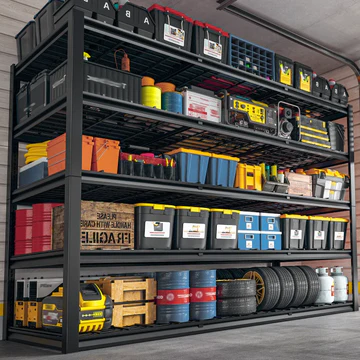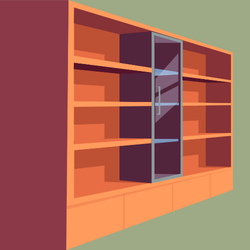Figuring out how to make the most of your available space can be a pretty satisfying challenge, especially if you’re dealing with a smaller home or you just want things to look cleaner and more organized. Cabinets are one of those secret weapons I keep coming back to; they do so much more than just hide stuff behind a door. When you maximize vertical space with cabinets, you’re basically getting bonus storage and freeing up that all-important floor area.

Why Vertical Storage Matters in Modern Spaces
If you’ve ever felt that your floor is getting crowded or your countertops are running out of room, vertical storage is super useful for reclaiming space. High ceilings or tall walls in kitchens, bathrooms, or offices end up as wasted real estate if they stay empty. By using cabinets that go up instead of out, you get more storage without giving up valuable walking space.
Real estate data backs up just how valuable this can be. Many experts agree that builtin vertical storage actually gives your home a more spacious vibe, especially in tight spots. Whether you own or rent, making use of what’s above eye level provides more flexibility for both looks and function.
This approach works everywhere from studio apartments to large homes, and it’s one of the easiest ways to get organized without building out your footprint or making dramatic renovations. Vertical cabinets really are a win-win for anyone looking to cut clutter without increasing floor space.
Choosing the Right Cabinets for Vertical Impact
The trick to making vertical storage work is picking the cabinet design and placement that actually fits your needs, not just what looks trendy. Cabinets come in more shapes, sizes, and heights than ever before. Standard upper kitchen cabinets are a classic, but there are lots of options now for custom builtins, freestanding towers, and even stackable units that let you addon storage as you need it.
Here are some terms and ideas I’ve found really helpful when deciding on cabinet options for tight or vertical spaces:
- Tall Cabinets: Sometimes called pantry towers or linen presses, these cabinets stretch straight up and can run floortoceiling for massive vertical storage.
- Uppers Over Appliances: Placing cabinets above refrigerators, ovens, or washers reclaims dead space that usually gathers dust.
- OpenTop Shelving Cabinets: These combine traditional cabinets below with open shelves above for items you grab frequently or want to show off.
- Modular or Stackable Units: These are pretty handy for renters or for those not ready for permanent renovations, since you can add more layers as your storage needs grow.
Good Strategies for Maximizing Every Inch

Making vertical cabinets work for you isn’t just about buying taller cabinets—it’s about planning ahead. Here’s what I look at when mapping out a vertical storage strategy:
- Go Up to the Ceiling: Cabinets that stop short leave a gap above that usually just collects dust. Extending all the way up gives you more room to stash seasonal or rarelyused items and also makes a space look finished.
- Deep or Shallow? Tall cabinets don’t always have to be deep. In narrow hallways or small bathrooms, a shallow tall cabinet provides storage without jutting into your movement path.
- Add Interior Dividers: Splitting up tall spaces inside the cabinet with shelves, pullouts, or baskets helps avoid wasted vertical inches and keeps things tidy.
- Stack Where You Can: If you already have a base cabinet, sometimes you can just add a matching upper unit on top, creating a tower configuration.
- Double-Duty Doors: The inside of a cabinet door is a prime spot for spice racks, cleaning product holders, or small baskets. No extra footprint needed, and it’s a real space saver.
Getting the details right means more than just having more places to pile stuff. It keeps what you need within arm’s reach while opening up your floor plan for daily activities.
Common Challenges With Vertical Cabinets and Solutions
Just like with any home project, there are a few hiccups that pop up when you try to go vertical with your cabinets. From installation headaches to awkward upper shelves, here are some things I keep in mind:
- Hard-to-Reach Spaces: The top shelves of tall cabinets can feel out of reach, especially in kitchens or closets. A sturdy step stool nearby solves this, or you can reserve those shelves for items you use a few times a year. Softclose hardware and pullout trays make accessing stuff much easier too.
- Installation Limits: Not every wall can handle the weight of fully loaded cabinets, especially in older homes. Anchoring cabinets into studs and spreading out heavy items avoids any safety issues. Freestanding towers are a great workaround for tricky walls.
- Visual Clutter: Going all the way up can look heavy if every inch is closed cabinets. Breaking up tall cabinets with open shelves, glass fronts, or a different color at the top keeps things light and adds some visual style.
- Ventilation and Lighting: Tall cabinets can block airflow or light if placed somewhere tight. Undercabinet lights, reflective backsplashes, or glasspanel doors help brighten up dark nooks and make everything easier to see.
Making Tall Cabinets Actually Work
After putting in tall storage in my own place, I learned a few “real life” tweaks that made a difference. For example, putting seasonal items like big serving platters or holiday decor on the uppermost shelf frees up prime real estate for daily items. Labeling bins and using clear containers also helps cut down on the hunting for whatever you stashed up there last year. Lazy Susans and pulldown racks are surprisingly effective, so you don’t have to be tall to get what you need!
Creative Uses for Vertical Cabinet Space

Thinking beyond kitchens and bathrooms, vertical cabinets work almost anywhere storage is needed. Here are some spots where this approach truly shines:
- Entryways: Tall cabinets can replace old coat racks, hiding shoes or bags right up to the ceiling and keeping the floor clear for foot traffic.
- Home Office: Towers beside a desk store books, files, and supplies. I use the top shelf for tech gear or backup cables I rarely need.
- Laundry Rooms: Over the appliance cabinets are really useful for keeping detergents, cleaning products, and towels tucked away but close at hand.
- Kids’ Rooms: Slim tall cabinets fit small spaces, holding everything from art supplies to school gear. Lockable doors or adjustable shelves make these super adaptable as kids grow.
Pretty much any room prone to clutter can benefit from some thoughtful vertical storage. Even a narrow cabinet tucked in an unused corner can make a real difference in how tidy a home feels. In living rooms, tall media cabinets can hold board games, electronics, or extra throw blankets, helping everything look more puttogether.
Frequently Asked Questions About Vertical Cabinets

Here are a few common questions that come up when people look for ways to maximize vertical space with cabinets:
Question: What’s the safest way to install supertall cabinets?
Answer: Anchor cabinets into wall studs and, if possible, run vertical supports all the way to the floor. For heavyduty storage, metal brackets or professional installations add extra peace of mind and keep everything sturdy.
Question: How do I access items on high shelves in tall cabinets?
Answer: Keep a step stool somewhere close by, and use organizational tools like labeled bins, pullout trays, or a pulldown shelf mechanism for harder to reach items. Some folks also use sliding ladders in kitchens for an eyecatching yet practical solution.
Question: Will tall cabinets make my small kitchen feel tighter?
Answer: When done thoughtfully, vertical cabinets actually help draw the eye upward and can make ceilings seem higher. Mixing in open shelves, glass doors, or lighter colors prevents the space from feeling boxed in or too heavy.
Best Practices for Making the Most of Your Cabinet Space
Creating efficient vertical storage isn’t just about going taller. It’s super important to look for smart ways to organize the interior so you’re not stacking and forgetting stuff. I always like to group items by how often I need them, keep things visible with clear bins, and opt for adjustable shelving so my storage can shift with the seasons. Investing in drawer dividers or shelf risers can also give a boost to the usefulness of each cabinet, making everything easier to grab.
If you’re unsure what to store up high, I usually suggest starting with big but lightweight items—pillows, extra linens, seasonal decorations, or backup kitchenware. Keep your daily grab items at a comfortable height to make day to day life easier and avoid unnecessary climbing.
In today’s homes, vertical storage gives a real boost to decluttering and usability. With the right cabinet picks and a bit of planning, you can save space, cut down on clutter, and help your home feel a whole lot more open and put together.

Happiness is finding the right tool, right when you need it!
